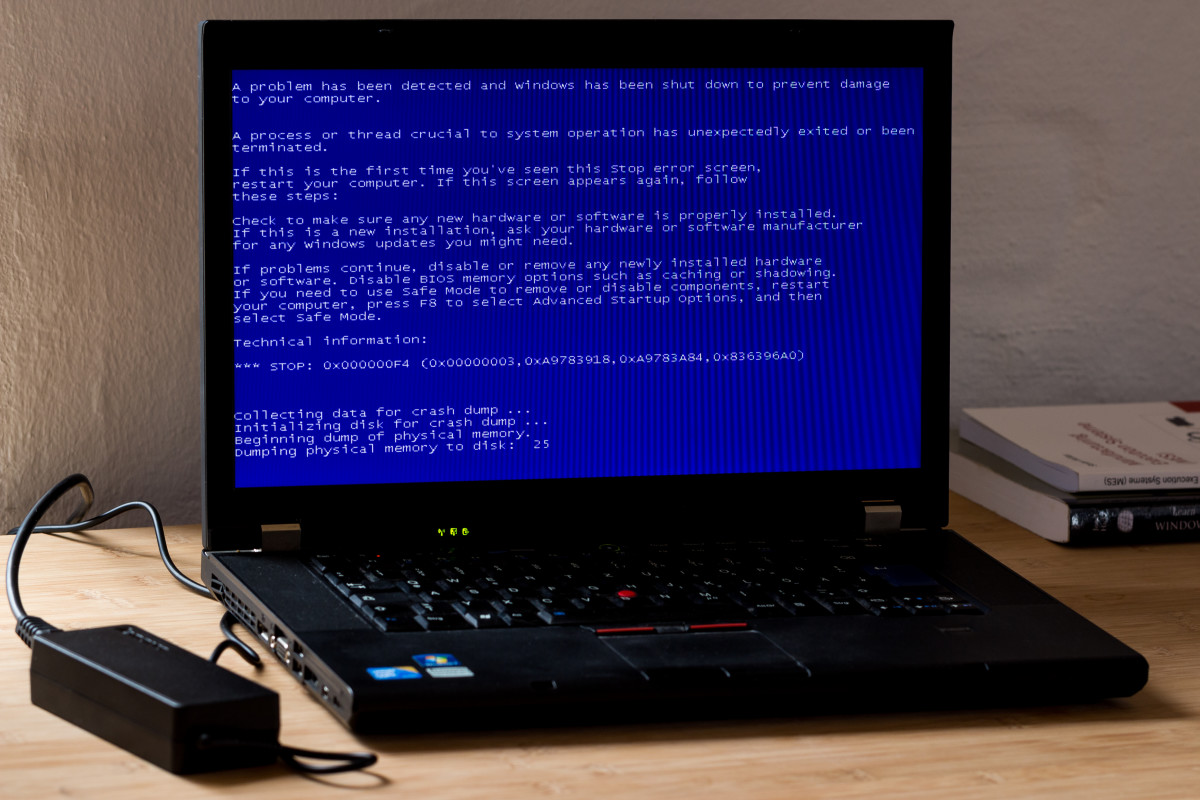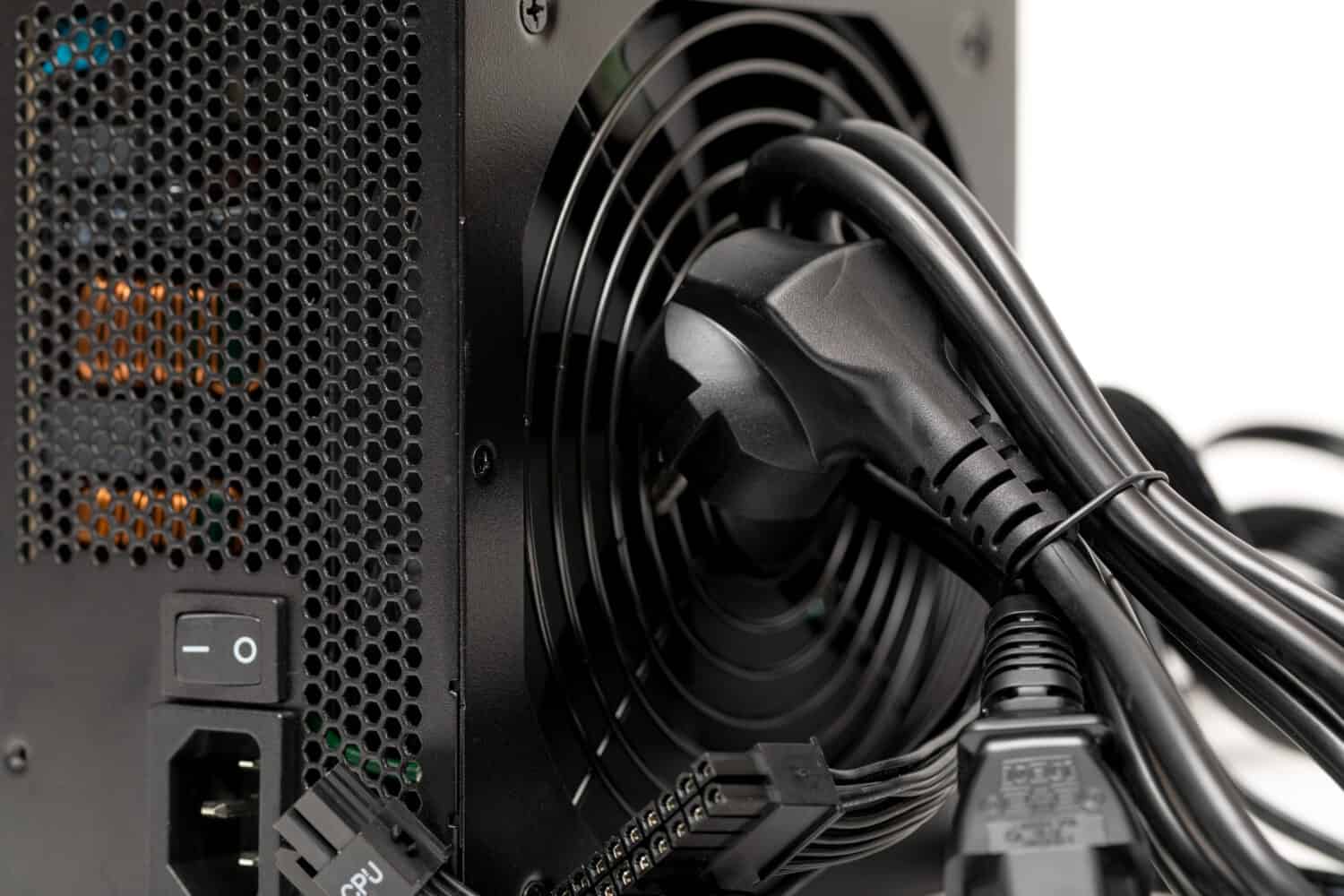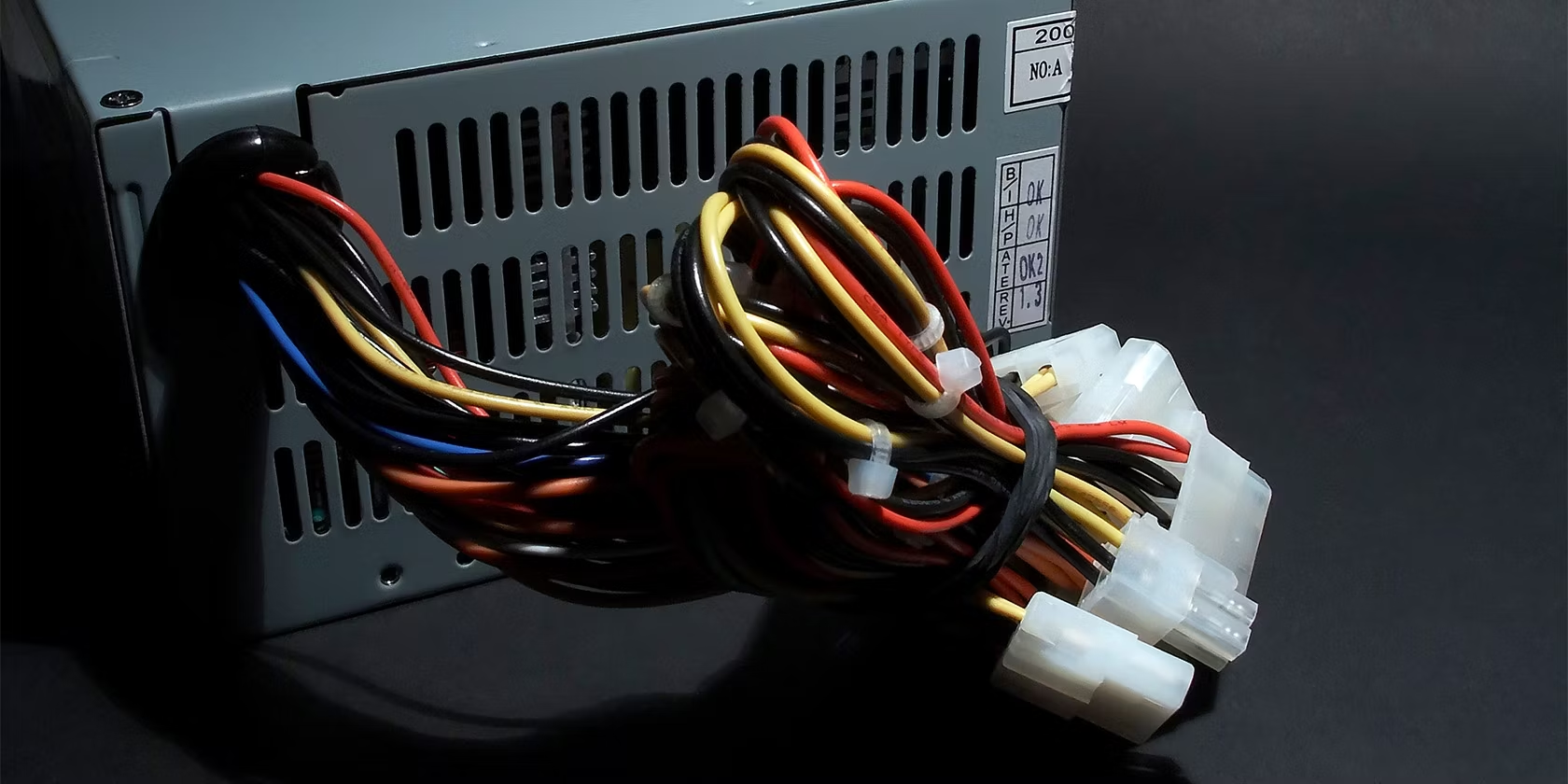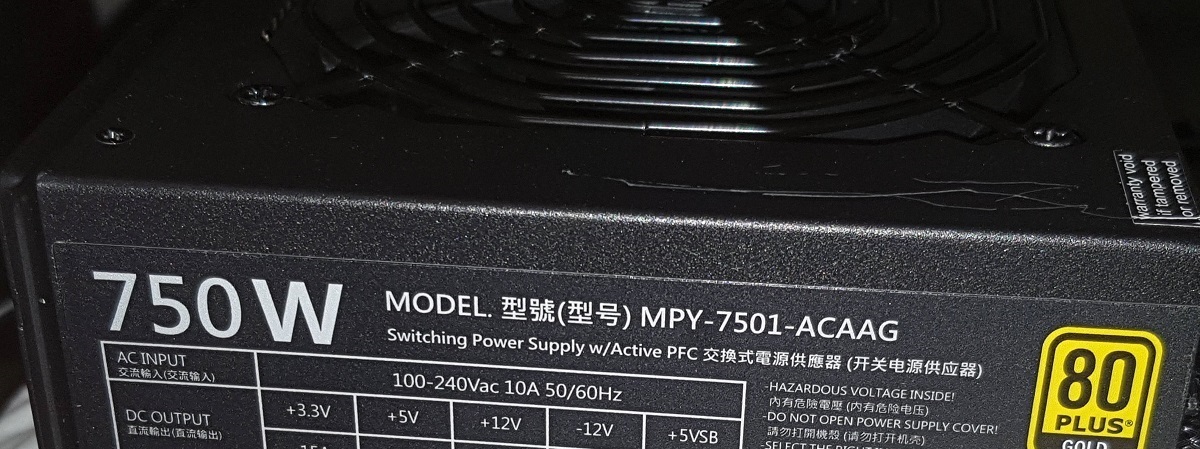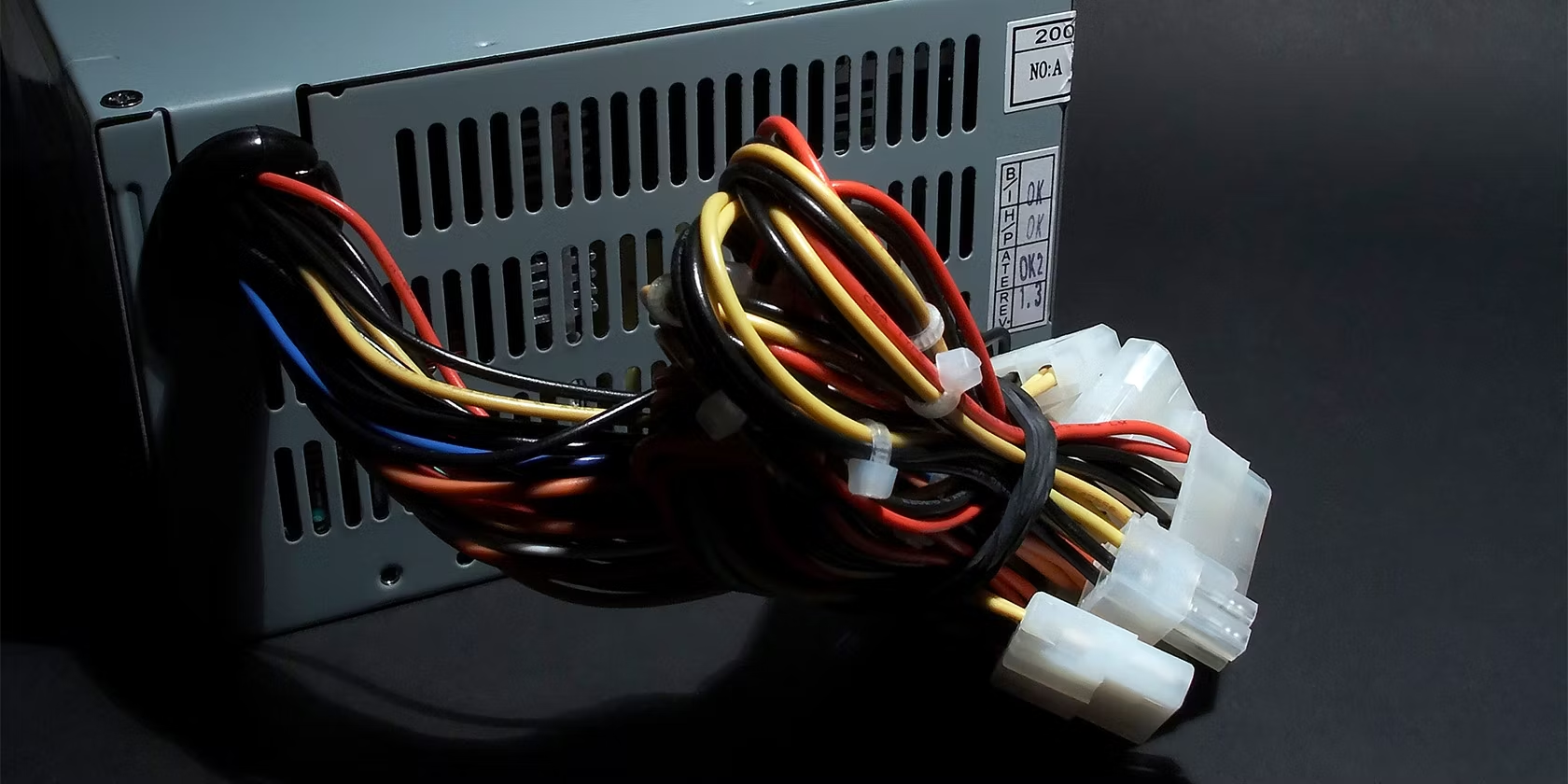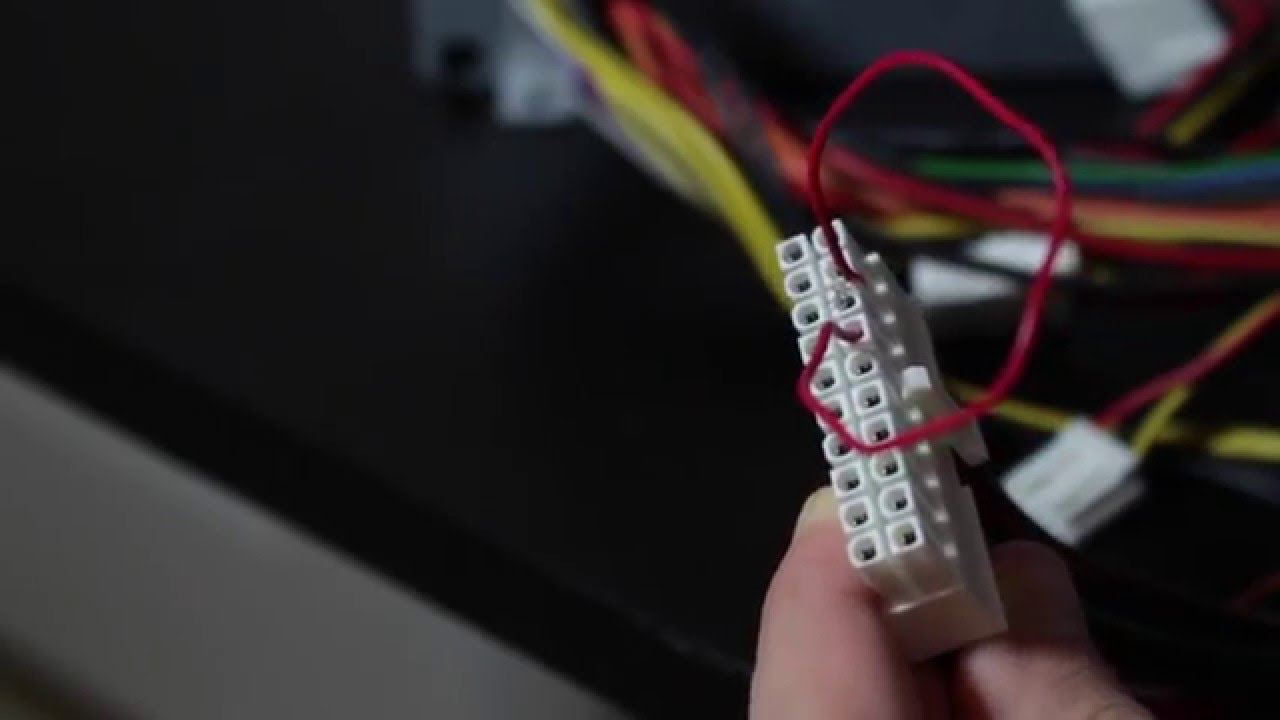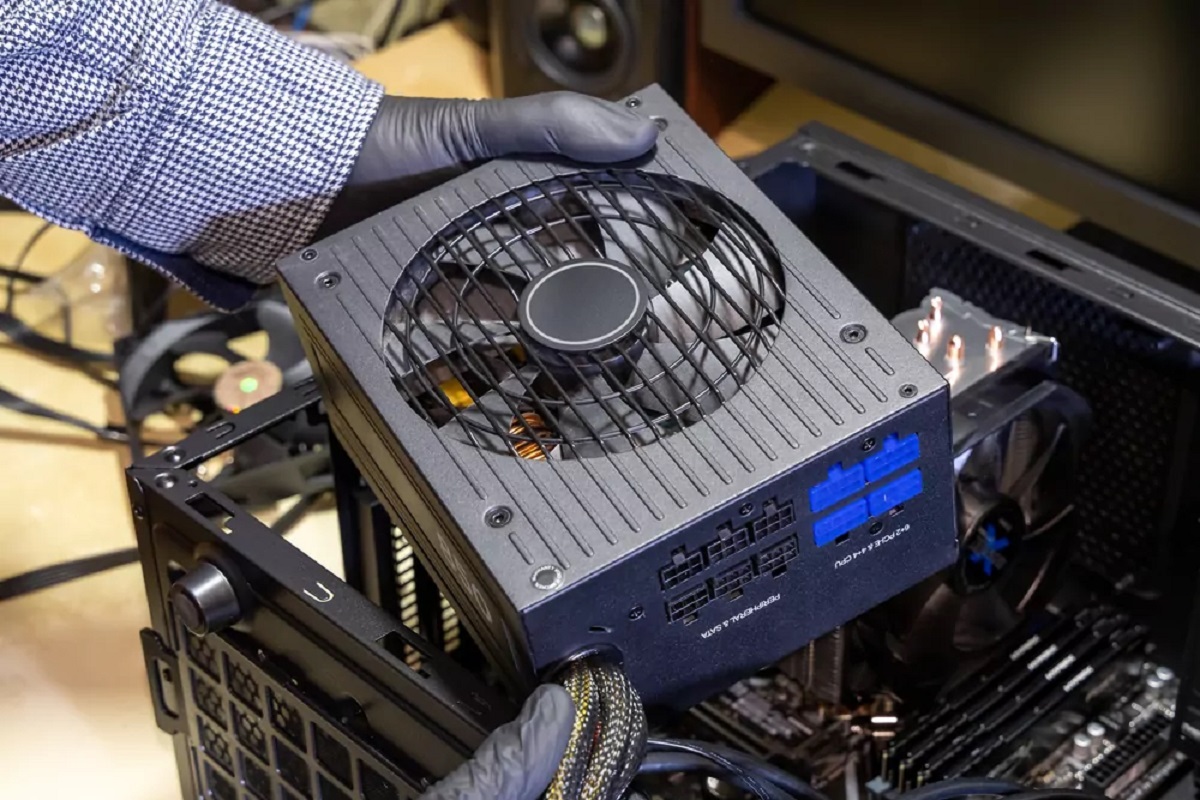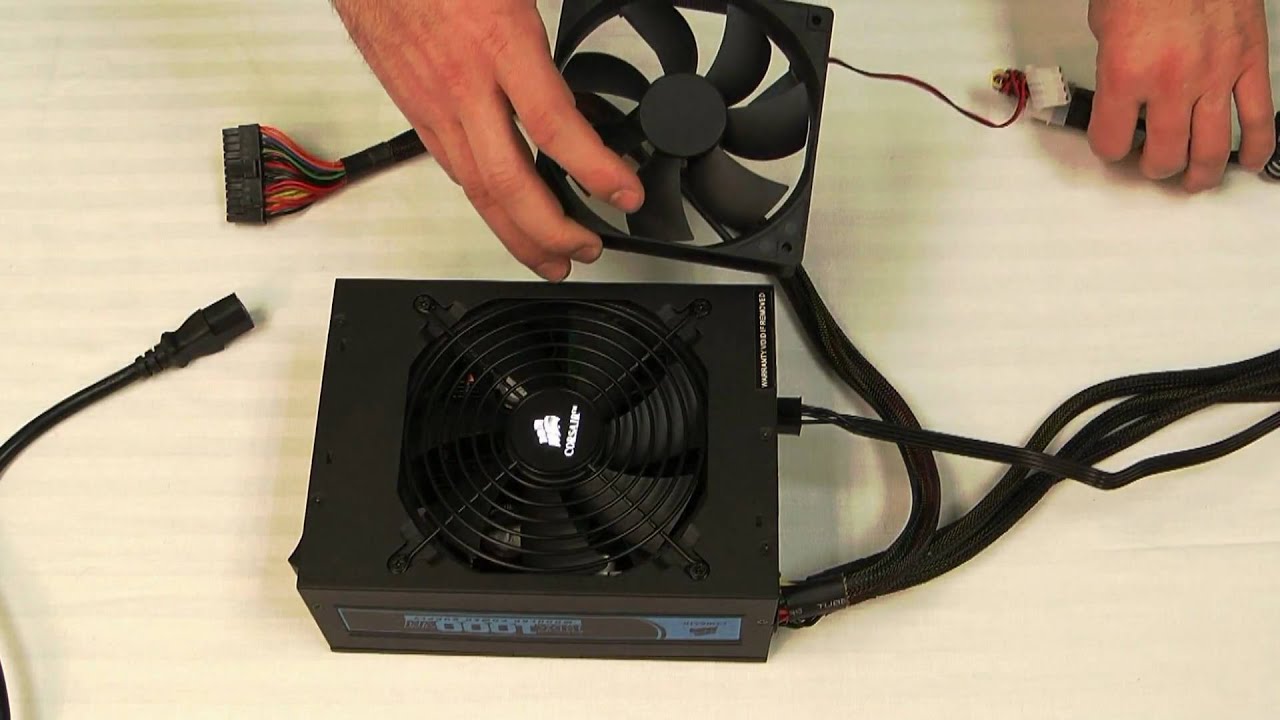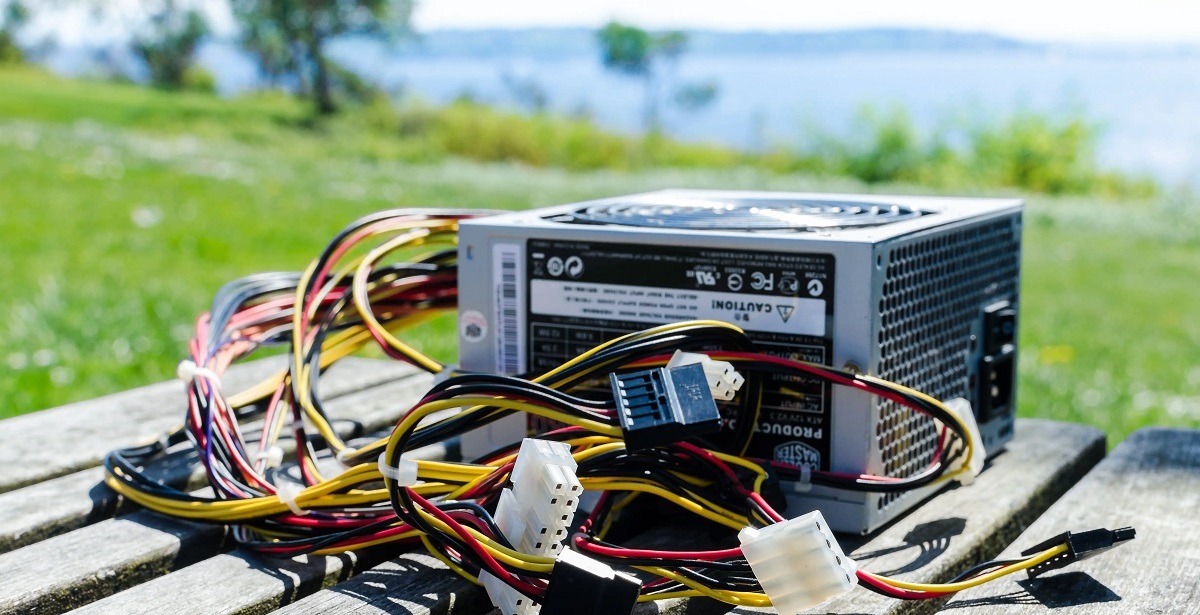Introduction
Having a reliable power supply unit (PSU) is essential for the smooth operation of your computer. The PSU is responsible for providing power to all the components of your system, ensuring they receive a steady and efficient supply of electricity. However, like any other hardware component, PSUs can also fail over time. Knowing the signs of a failing PSU can help you take the necessary steps to prevent potential damage to your computer and data loss.
PSU failure can manifest in various ways, ranging from random shutdowns and blue screen errors to strange noises and burning smells. By familiarizing yourself with these common warning signs, you can troubleshoot and address PSU issues promptly, potentially avoiding costly repairs or component replacements.
In this article, we will explore the most common signs of PSU failure so that you can stay informed and take appropriate action when needed. It’s important to note that while these signs are indicative of PSU problems, they may also be influenced by other factors. Therefore, it’s always a good practice to consult a computer technician or professional if you’re unsure about the exact cause of the issues you’re experiencing.
Common Signs of PSU Failure
Knowing the common signs of PSU failure can help you identify potential issues before they worsen. While individual symptoms may vary depending on the specific PSU model and the extent of the problem, here are some key indicators that you should be aware of:
- Random Shutdowns or Restarting: One of the telltale signs of a failing PSU is when your computer shuts down or restarts unexpectedly. If your system consistently powers off without any warning or restarts on its own, it could be a clear indication that your PSU is unable to sustain stable power delivery.
- Blue Screen of Death (BSOD): Another common sign of PSU failure is the appearance of the infamous Blue Screen of Death. A faulty PSU can disrupt the power supply to critical components, causing system crashes and triggering blue screen errors. If you find yourself encountering frequent BSODs, it’s worth investigating the health of your PSU.
- Strange Noises: Unusual noises coming from your PSU, such as buzzing, clicking, or grinding sounds, should never be ignored. These noises could indicate issues with the fan, capacitor, or other internal components of the PSU. Ignoring these sounds can lead to further damage and potential system failure.
- Overheating: PSUs that are failing may generate excessive heat due to inefficient power distribution or component malfunction. If you notice that your PSU is running exceptionally hot to the touch or if you experience frequent system overheating even with adequate cooling, it could be a sign of PSU failure.
- Burning Smell: A burning smell emanating from your computer is never a good sign, and it’s often associated with a failing PSU. This odor could indicate that components within the PSU are overheating or even melting. If you detect a burning smell, it’s crucial to address the issue promptly to prevent potential damage or fire hazards.
These are just a few examples of the common signs of PSU failure. Other signs may include failure to power on, unstable voltage output, voltage fluctuations, or excessive coil whine. If you experience any of these symptoms, it’s important to take action immediately to avoid potential damage to your computer and other hardware components.
Random Shutdowns or Restarting
One of the most obvious signs of a failing PSU is the occurrence of random shutdowns or restarts. If your computer suddenly powers off without any warning or restarts on its own, it could be a clear indication that your PSU is struggling to provide a consistent and stable power supply to your system.
When a PSU fails, it may not be able to deliver enough power to the components of your computer, causing the system to shut down abruptly. The shutdowns may occur during heavy usage, such as when running resource-intensive applications or games, or even during lighter tasks. The random nature of these shutdowns can be frustrating and may result in data loss or damage if not addressed promptly.
There are several reasons why a failing PSU can result in random shutdowns or restarts. One possibility is that the PSU may be unable to handle the power load required by the components in your system, causing it to shut down as a safety measure. Another possibility is that the PSU’s internal components, such as capacitors, are deteriorating, leading to instability in the power supply.
To determine if the PSU is the cause of the random shutdowns or restarts, you can perform a few diagnostic steps. Firstly, check that all the connections between the PSU and the components are secure and properly seated. Loose connections can cause power interruptions and result in unexpected shutdowns. Additionally, make sure that the PSU fan is functioning correctly and clear of any dust or debris, as overheating can also contribute to random shutdowns.
If the random shutdowns persist even after checking the connections and ensuring proper cooling, it’s advisable to test the system with a replacement PSU. This will help determine if the original PSU is indeed the culprit. However, it’s important to note that replacing a PSU requires caution and should be done by someone who is familiar with computer hardware installations.
In summary, random shutdowns or restarts are common signs of a failing PSU. If you experience these issues consistently, it’s crucial to address the problem promptly to prevent potential damage to your computer and other components. Consulting a computer technician or professional can help diagnose the issue accurately and ensure the appropriate steps are taken to rectify the problem.
Blue Screen of Death (BSOD)
The Blue Screen of Death (BSOD) is a notorious error screen that appears when a Windows operating system encounters a critical error. While a BSOD can be caused by various factors, including software issues, hardware failures, or driver conflicts, a failing PSU can also be responsible for triggering this dreaded screen.
A failing PSU may disrupt the power supply to critical components of your computer, leading to system crashes and triggering the BSOD. When the PSU is unable to provide a consistent and stable power flow, it can cause unexpected errors within the operating system, resulting in the appearance of the BSOD.
If you encounter frequent occurrences of the BSOD, it’s crucial to investigate the health of your PSU as a potential cause. One way to determine if the PSU is the culprit is to check for any other symptoms of PSU failure, such as random shutdowns, strange noises, or overheating. If any of these signs are present alongside the BSOD, it’s likely that your PSU is contributing to the issue.
To troubleshoot the BSOD error, you can start by updating your system’s drivers and running a malware scan to rule out any software-related causes. However, if the BSOD persists, it’s important to consider the possibility of a failing PSU and take appropriate action.
Replacing the PSU with a known working one can help identify if the existing PSU is causing the BSOD. However, before attempting to replace the PSU, ensure that you have the necessary knowledge and experience in handling computer hardware installations. If you are unsure, it’s advisable to seek assistance from a professional technician.
In summary, the Blue Screen of Death is a common indicator of various system errors, including those caused by a failing PSU. If you encounter frequent occurrences of the BSOD, it’s essential to consider the health of your PSU as a potential factor. Addressing a failing PSU promptly can help restore system stability and prevent further damage to your computer and data. Consulting a computer technician can also provide professional guidance in diagnosing and resolving the issue effectively.
Strange Noises
Unusual noises coming from your computer, particularly from the power supply unit (PSU), can be a strong indication that something is wrong. While it’s normal for a PSU to emit a soft hum, persistent and abnormal sounds should not be ignored, as they could be signs of a failing PSU.
One of the most common strange noises associated with a failing PSU is a buzzing or whining sound. This noise can occur when the fan within the PSU is not functioning properly or when the capacitors are deteriorating. The buzzing or whining noise may be more noticeable during heavy usage or when the system is under a greater load.
Clicking or ticking sounds coming from the PSU can also indicate a problem. These sounds can be a sign of loose connections or internal components malfunctioning. If the PSU is clicking consistently or rhythmically, it may indicate a more serious issue that needs immediate attention.
Grinding or scraping noises are another cause for concern. These noises may suggest that the PSU’s fan or internal components are rubbing against each other or that there is a foreign object lodged inside the PSU. It’s important not to overlook these sounds, as they could lead to irreversible damage or overheating.
If you notice any strange noises coming from your PSU, it’s advisable to take action to prevent further complications and potential system failure. Start by ensuring that the PSU fan is clean and free from any dust or debris that could be obstructing its movement. However, if the noise persists, it’s best to consult a computer technician or professional who can diagnose the issue accurately and recommend the appropriate course of action.
In some cases, the solution may involve replacing the PSU with a new one. However, it’s crucial to exercise caution when replacing a PSU, as it requires technical knowledge and proper installation. If you are unsure about how to proceed, seeking professional assistance is always recommended to avoid accidental damage and ensure the longevity of your computer system.
In summary, strange noises coming from your PSU should not be ignored, as they can indicate problems and potential PSU failure. Buzzing, clicking, ticking, grinding, or scraping sounds should be investigated promptly. Taking steps to address these noises can help prevent further damage to your computer and ensure its smooth operation. Don’t hesitate to seek professional help to accurately diagnose and resolve the issue for optimal performance and system reliability.
Overheating
Overheating is a common issue that can occur with various components of your computer, including the power supply unit (PSU). A failing PSU can contribute to excessive heat generation in your system, leading to instability and potential damage if left unaddressed.
When a PSU starts to fail, it may struggle to distribute power efficiently, resulting in increased resistance and heat buildup. Overheating can occur within the PSU itself or affect other components due to irregular power delivery. This can manifest as system instability, random shutdowns, or even permanent damage to the PSU and surrounding hardware.
One of the first signs of PSU-related overheating is a noticeable increase in the temperature of the PSU unit. If you find that the PSU is running excessively hot to the touch, it’s important to investigate the issue further. Additionally, if you experience consistent system overheating despite having adequate cooling solutions in place, it’s worth considering the possibility of a failing PSU as the underlying cause.
To address PSU overheating, start by ensuring proper airflow within your computer case. Clear any dust or debris from the PSU fan and other ventilation areas, as accumulated dirt can impede airflow and exacerbate overheating. It’s also important to ensure that the PSU fan is functioning correctly and not obstructed by any cables or components.
Another potential cause of PSU overheating is an improperly sized power supply for your system’s requirements. Using a PSU with insufficient wattage can put a strain on the unit and cause it to generate excess heat. Make sure to choose a PSU that is appropriate for your computer’s power needs, considering the components you have installed.
If your PSU continues to overheat even after taking these measures, it may indicate a more serious issue that requires professional attention. Consulting a computer technician or professional can help identify the exact cause of the overheating and determine if PSU replacement is necessary.
In summary, overheating can be a symptom of a failing PSU. Pay attention to the temperature of the PSU itself and any signs of system overheating. Take steps to ensure proper ventilation and cooling within your computer case. If the overheating persists, seek professional assistance to diagnose the issue accurately and prevent further damage to your system. Addressing PSU-related overheating promptly can help maintain system stability and prolong the lifespan of your computer.
Burning Smell
A burning smell coming from your computer is never a good sign and should not be ignored. It can indicate a serious problem, and when it comes to the power supply unit (PSU), it is often a clear indication of a failing component.
The burning smell usually arises from overheating or the degradation of internal components within the PSU. When the PSU is unable to handle the power load required by your computer’s components, it can overheat and start emitting a distinct burning odor. Ignoring this smell can lead to further damage and potential fire hazards.
If you detect a burning smell emanating from your computer, it’s crucial to take immediate action. Start by shutting down your computer to prevent further damage and potential safety risks. Carefully inspect the PSU for any visible signs of damage, such as scorch marks or discoloration, which can pinpoint the source of the smell.
There are several possible causes for the burning smell, including a faulty power supply fan, melting or burning capacitors, or overloaded power distribution. Regardless of the specific cause, it’s important to address the issue promptly to avoid further damage to your computer and potential harm to yourself or your surroundings.
In cases where the PSU is indeed the source of the burning smell, it’s advisable to replace it as soon as possible. Replacement PSUs should be chosen based on the power requirements of your system and should be installed by someone experienced with computer hardware. Any suspected damage or electrical issues should be assessed and resolved by a professional technician to ensure the continued functionality and safety of your computer.
Remember, a burning smell should never be ignored, especially when it is emanating from your PSU. It is essential to respond quickly to prevent potential damage and hazards. By taking immediate action and seeking professional help if needed, you can safeguard your computer and ensure its optimal performance.
Failure to Power On
Experiencing a complete failure to power on your computer can be a frustrating and concerning situation. In many cases, a failing power supply unit (PSU) can be the primary culprit behind this issue. When the PSU fails to provide the necessary power to your system, it can result in the computer’s inability to turn on or boot up.
Several factors can contribute to the failure of the PSU to power on your computer. Over time, the internal components of the PSU can deteriorate, leading to reduced efficiency and eventual failure. Power surges, lightning strikes, or electrical issues can also cause irreparable damage to the PSU, rendering it incapable of delivering power to your computer.
When you encounter a failure to power on, it’s important to check other potential causes such as loose connections, faulty power cords, or issues with other components. However, if you have ruled out these possibilities and are still unable to power on your computer, it’s advisable to inspect the PSU for any signs of failure.
One way to determine if the PSU is the cause of the problem is to listen for any sounds or indications that it is receiving power. If the PSU fan does not spin when you attempt to turn on the computer, or if there is no visible LED indicator light on the PSU itself, it could indicate a failure within the unit.
To ensure a proper diagnosis, you can also try testing the computer with a known working PSU. If the system powers on and functions normally with the replacement PSU, it confirms that the original PSU is indeed the cause of the failure to power on.
In such cases, the solution requires replacing the faulty PSU with a new one. When purchasing a replacement PSU, ensure that it has the appropriate wattage and compatibility for your computer’s power requirements. It is recommended to consult a professional or experienced individual for assistance during the installation process, as improper installation can lead to further complications.
In summary, a failure to power on your computer can often be attributed to a failing PSU. Checking for loose connections and other potential causes is important, but if the problem persists, it’s crucial to inspect the PSU. Replace the PSU if necessary with a compatible unit to restore power and get your system up and running again. Seeking professional assistance during the replacement process can ensure a smooth and successful installation.
Unstable Voltage Output
The power supply unit (PSU) is responsible for delivering stable and consistent voltage to the components of your computer. However, when a PSU is failing, it may struggle to maintain a steady voltage output, resulting in unstable power delivery. This can have detrimental effects on the performance and functionality of your computer.
One of the indicators of unstable voltage output is the fluctuation of voltage levels both within the computer and on peripheral devices. You may notice sudden drops or spikes in the voltage, which can cause various issues. Components may not receive sufficient power, leading to system instability, crashes, or even permanent damage. On the other hand, voltage spikes can overload and damage components due to excessive power supply.
Unstable voltage output can be caused by various factors, including capacitor degradation, faulty voltage regulation, or insufficient power load handling capacity of the PSU. Electrical issues in your home or workplace, such as power surges or inconsistent electrical supply, can also contribute to voltage instability.
To identify if your PSU is the cause of the unstable voltage output, you can use a multimeter to measure the voltage levels at the PSU’s output connectors. Compare these readings with the specified voltage values for your particular PSU model. If the readings consistently deviate from the expected values, it indicates a problem with the PSU’s voltage regulation.
If you suspect an unstable voltage output from your PSU, it is crucial to address the issue promptly to prevent potential damage to your computer and its components. One possible solution is to replace the PSU with a new one that has stable voltage regulation. While doing so, ensure that the replacement PSU has sufficient wattage to handle the power requirements of your system.
However, it’s important to note that other factors, such as the quality and stability of your building’s electrical supply, can also affect voltage output. If the unstable voltage output persists even after replacing the PSU, it may be necessary to consult an electrician to investigate and fix any underlying electrical issues.
In summary, unstable voltage output from the PSU can cause various problems, including system instability and component damage. Monitoring voltage levels and using a multimeter to detect irregularities can help identify if the PSU is at fault. Replacing the PSU with a stable and suitable unit can restore proper voltage regulation, ensuring the smooth operation of your computer. If the issue persists, seeking the expertise of an electrician may be necessary to resolve any underlying electrical issues.
Voltage Fluctuations
Voltage fluctuations can occur when the power supply unit (PSU) is unable to provide a consistent and stable voltage to the components of your computer. These fluctuations can result in a range of issues, from system instability to permanent damage to your hardware.
Voltage fluctuations can manifest in different ways, such as sudden drops or spikes in voltage levels. Dropping voltage levels can cause components to not receive the required power, leading to system instability, crashes, or even data loss. Conversely, voltage spikes can overload and damage components due to the sudden surge of power.
There are several factors that can contribute to voltage fluctuations. One common cause is a faulty or failing PSU. Over time, the internal components of the PSU can deteriorate, resulting in inconsistent voltage output. Other factors, such as power surges, unstable electrical supply, or insufficient power load handling capacity of the PSU, can also contribute to voltage fluctuations.
To identify if the PSU is the cause of voltage fluctuations, you can use a multimeter to measure the voltage levels at various points within your computer system. Compare these readings with the recommended voltage specifications for your specific components. If the readings consistently deviate from the expected values, it indicates a problem with the PSU’s voltage regulation.
If you experience voltage fluctuations, it’s crucial to address the issue promptly to prevent potential damage to your computer. One possible solution is to replace the PSU with a new one that has stable voltage regulation. When selecting a replacement PSU, ensure that it has sufficient wattage to handle the power requirements of your system.
It’s important to note that voltage fluctuations can also be influenced by external factors, such as unstable electrical supply in your building. To mitigate this, consider using a surge protector or an uninterruptible power supply (UPS) to help stabilize the incoming power and protect your computer from voltage spikes.
If the voltage fluctuations persist even after replacing the PSU and taking precautions with surge protection, it may be necessary to consult an electrician to assess and address any underlying electrical issues in your building’s power supply.
In summary, voltage fluctuations can have adverse effects on your computer system. Monitoring voltage levels and using a multimeter to detect irregularities can help identify if the PSU is the cause. Replacing the PSU with a stable unit and using surge protection measures can mitigate voltage fluctuations. If the issue persists, it’s advisable to seek the assistance of an electrician to investigate any underlying electrical problems in your building’s power supply.
Excessive Coil Whine
A phenomenon known as coil whine can occur in some power supply units (PSUs) and may be an indicator of potential issues. Coil whine is a high-pitched noise that can sound similar to a buzzing or whining sound coming from the PSU. While coil whine is not always a sign of a failing PSU, excessive or persistent coil whine can be concerning and may warrant further attention.
Coil whine is typically caused by the vibration of inductors or transformers within the PSU as electrical current passes through them. The vibrations can produce audible noise, especially in PSUs with less effective insulation or at certain loads. Some level of coil whine can be considered normal and may not have a significant impact on the performance or lifespan of the PSU or your computer.
However, when the coil whine becomes excessive or particularly noticeable, it could be an indication of a problem with the PSU. Excessive coil whine can be caused by several factors, such as poor PSU design, inadequate grounding, or subpar component quality. It’s worth noting that coil whine can also be influenced by the overall power consumption and load placed on the PSU, leading to varying levels of noise.
The impact of excessive coil whine on your computer system can vary. In some cases, it may be an annoyance, creating an undesirable noise while working or gaming. However, in rare instances, excessive coil whine can lead to performance issues, instability, or even premature failure of the PSU or other components.
If you are experiencing excessive coil whine, there are a few steps you can take to address the issue. Firstly, ensure that the PSU is properly grounded and that all connections are securely plugged in. In some cases, repositioning the PSU or using isolation techniques, such as rubber grommets or foam pads, can help reduce the audible vibrations and lessen the coil whine.
If the excessive coil whine persists despite these measures, you may want to consider replacing the PSU with a higher quality or better-designed unit. Researching PSU models and reading reviews can help identify PSUs that are known for having less coil whine. Additionally, consulting with a computer technician can provide valuable insights and recommendations tailored to your specific setup.
In summary, while some level of coil whine can be normal in PSUs, excessive or persistent coil whine can be a concern. It may indicate a problem with the PSU, such as poor design or low component quality, and could potentially impact system stability and performance. Taking steps to minimize or address the excessive coil whine, including proper grounding and potential PSU replacement, can help provide a quieter and more reliable computing experience.
Conclusion
Recognizing the signs of a failing power supply unit (PSU) is crucial for maintaining the stability and health of your computer system. By being aware of the common signs of PSU failure, such as random shutdowns, blue screen errors, strange noises, overheating, burning smells, failure to power on, unstable voltage output, voltage fluctuations, and excessive coil whine, you can take prompt action to mitigate potential risks and prevent further damage.
When experiencing any of these signs, it’s important to address the issue timely and accurately. Start by conducting basic troubleshooting, such as checking connections, cleaning dust, and ensuring proper cooling. However, if the symptoms persist, it may be necessary to consult a professional technician who can provide expert guidance and assistance in diagnosing and resolving the problem.
In some cases, the solution may involve replacing the failing PSU with a new, high-quality unit that meets your system’s power requirements. It’s important to choose a PSU with sufficient wattage, stable voltage regulation, and good quality components to ensure reliable and efficient power delivery.
Moreover, taking preventative measures, such as using surge protectors and maintaining good ventilation, can help prolong the lifespan of your PSU and protect your system from power-related issues.
Overall, staying vigilant and attentive to the signs of PSU failure can save you from potential data loss, hardware damage, and system instability. By addressing these issues promptly and effectively, you can ensure the longevity and optimal performance of your computer system.







